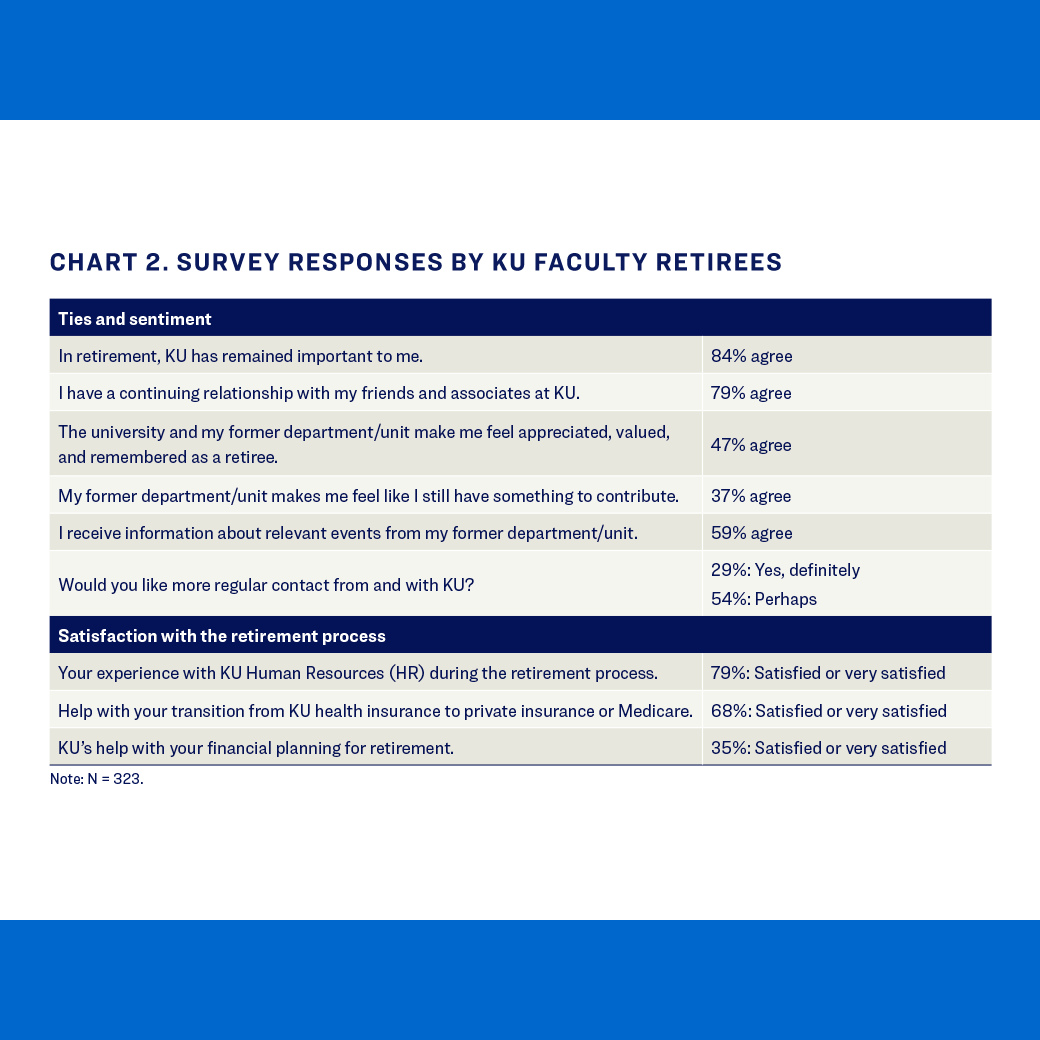By maintaining ties, retired faculty and their institutions both stand to benefit.
Summary
Institutional attentiveness reinforces retired faculty’s positive sentiments and helps ease their transition from work to retirement. Ongoing, systematic contact, in turn, enables institutions to tap into retirees’ disciplinary knowledge and professional networks. Yet, few colleges and universities provide regular interaction and follow-up with retirees. This paper examines the relationships retirees have with their former institutions and the expressed interests of both parties.
Key Insights
- A canvass of retirees can gauge the extent of their affection, ties, gratitude, and disposition toward service to the school.
- A survey can reveal retirees’ relative contentment with the way their separation from employment was administered and identify suggestions for more satisfactory procedures.
- There is no such thing as too much information too often. Employees should be pointed to retirement resources early in their careers and often thereafter.
- The HR office plays a critical role in ensuring a satisfactory passage to retirement and spotting opportunities to keep former colleagues informed about unit affairs and events.
- Retirees in higher education want to know that their work and service mattered. It does not take much for an institution to occasionally affirm that expectation.




